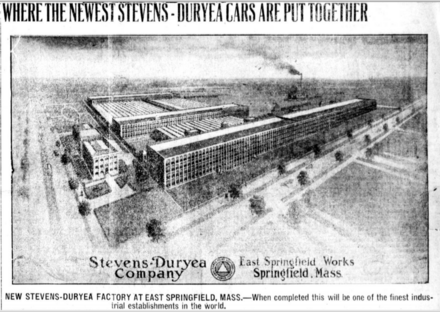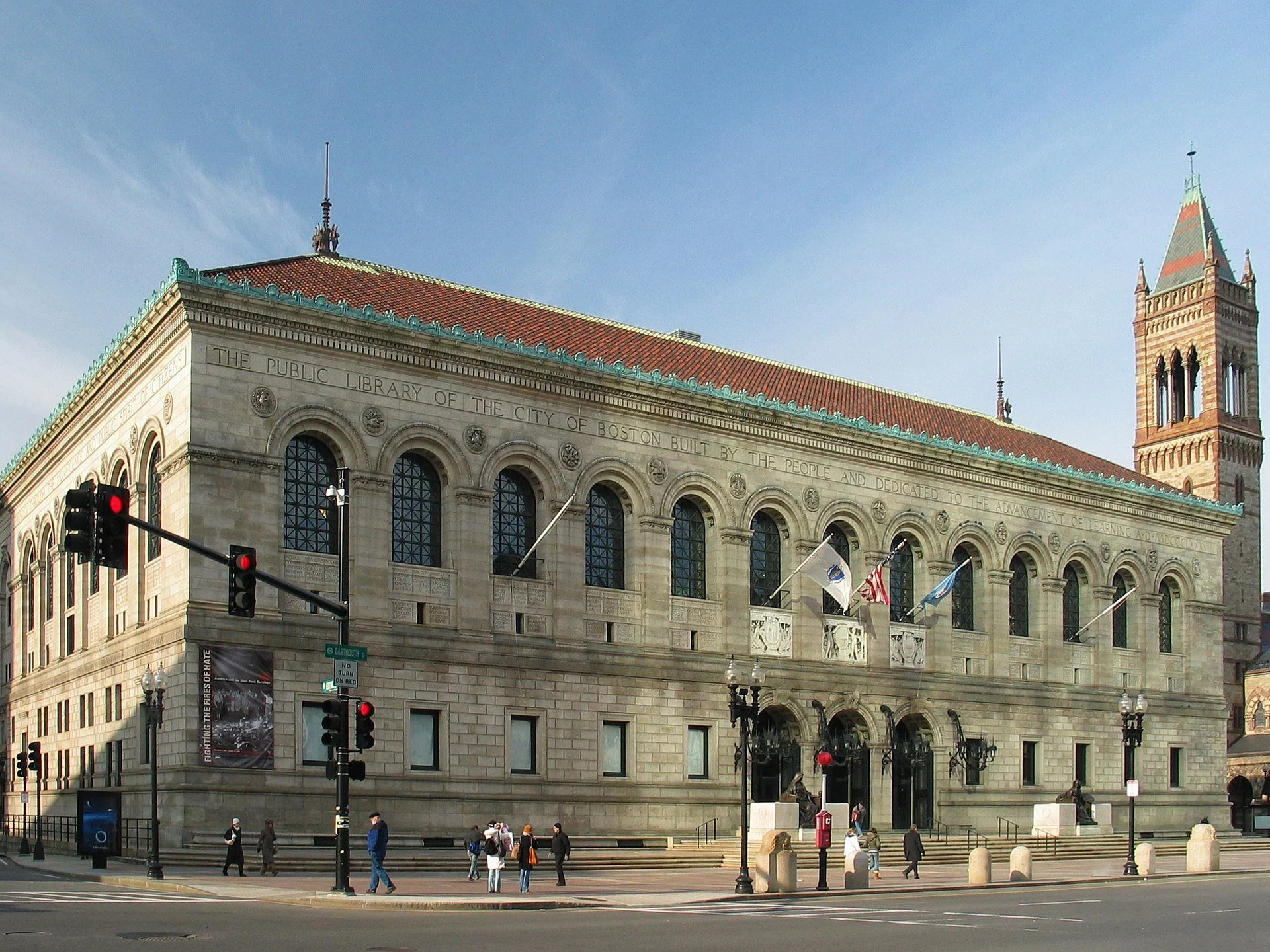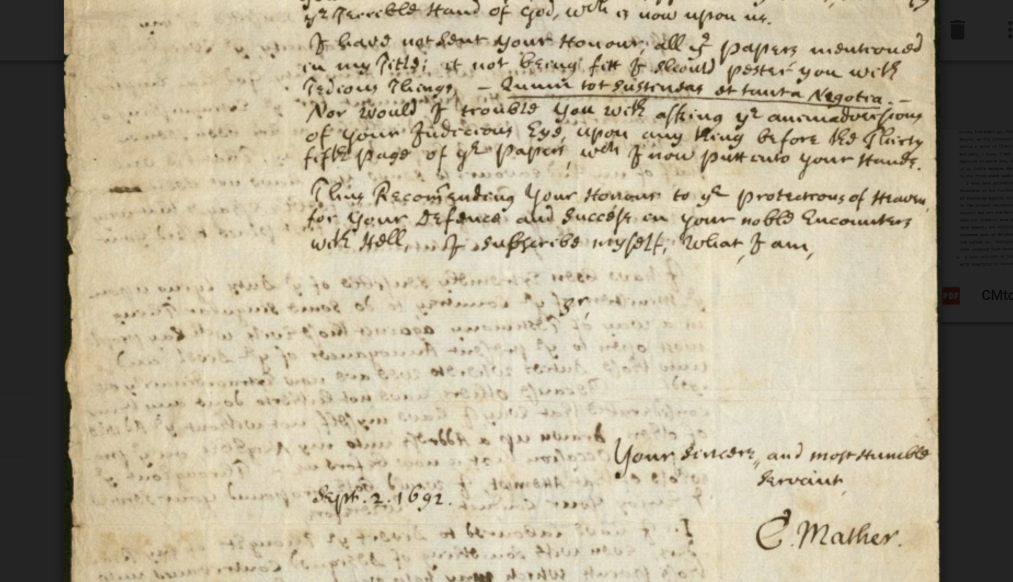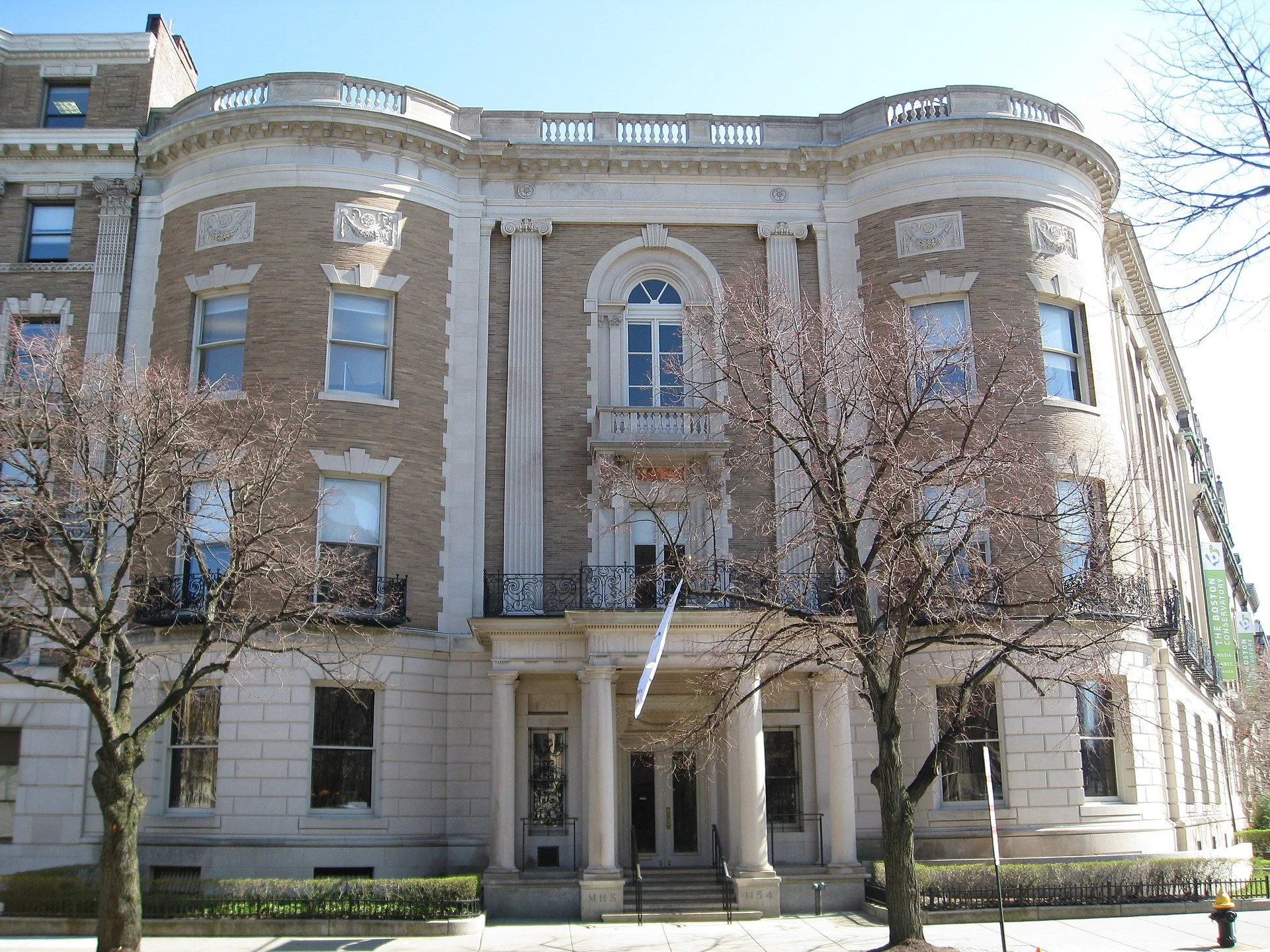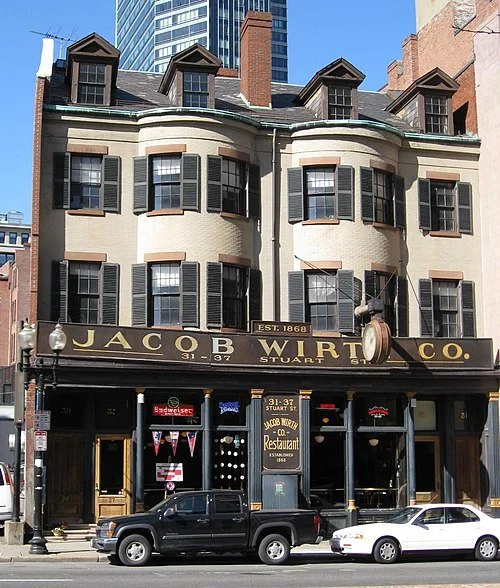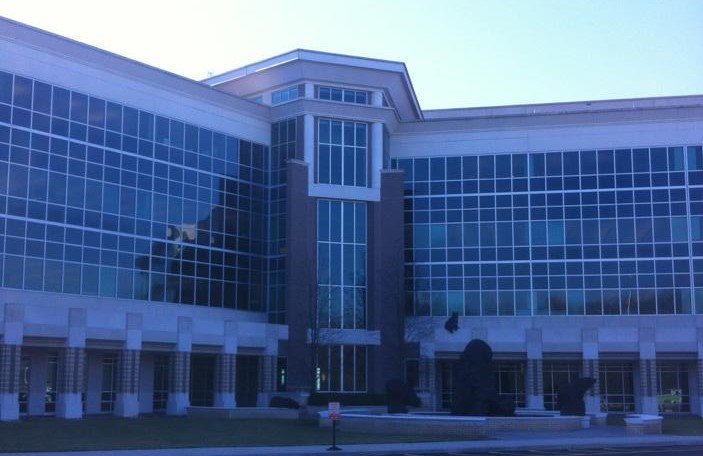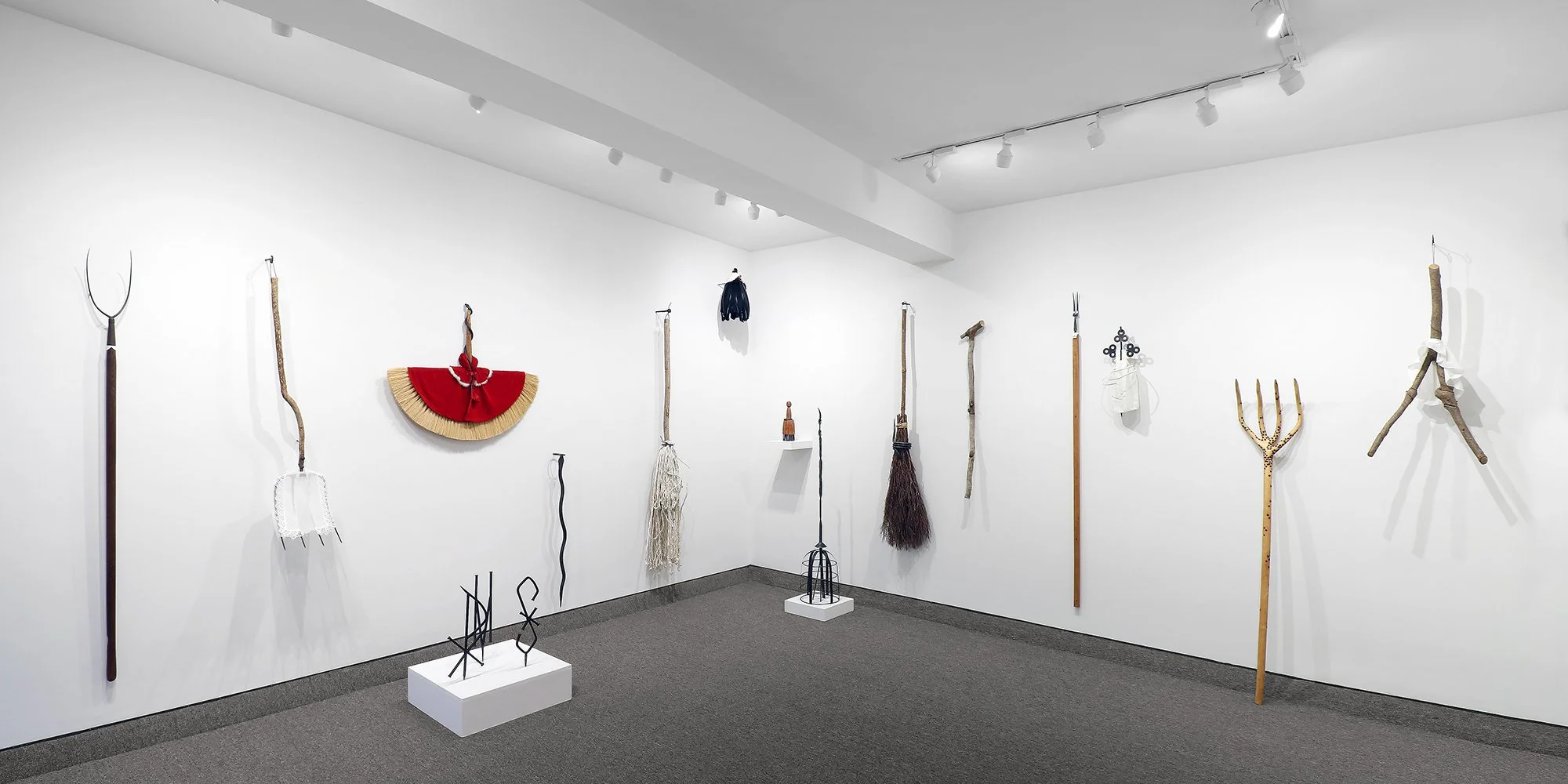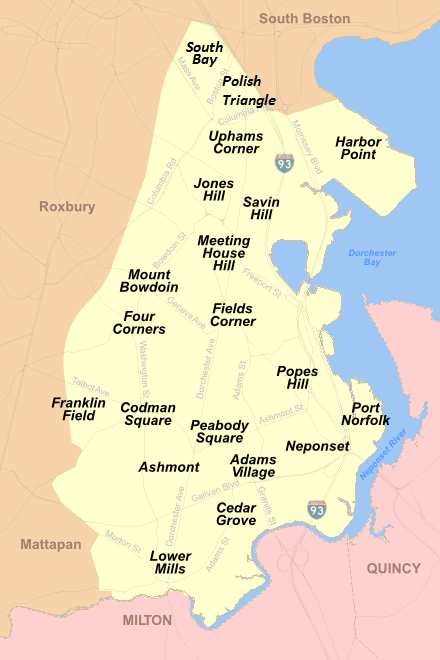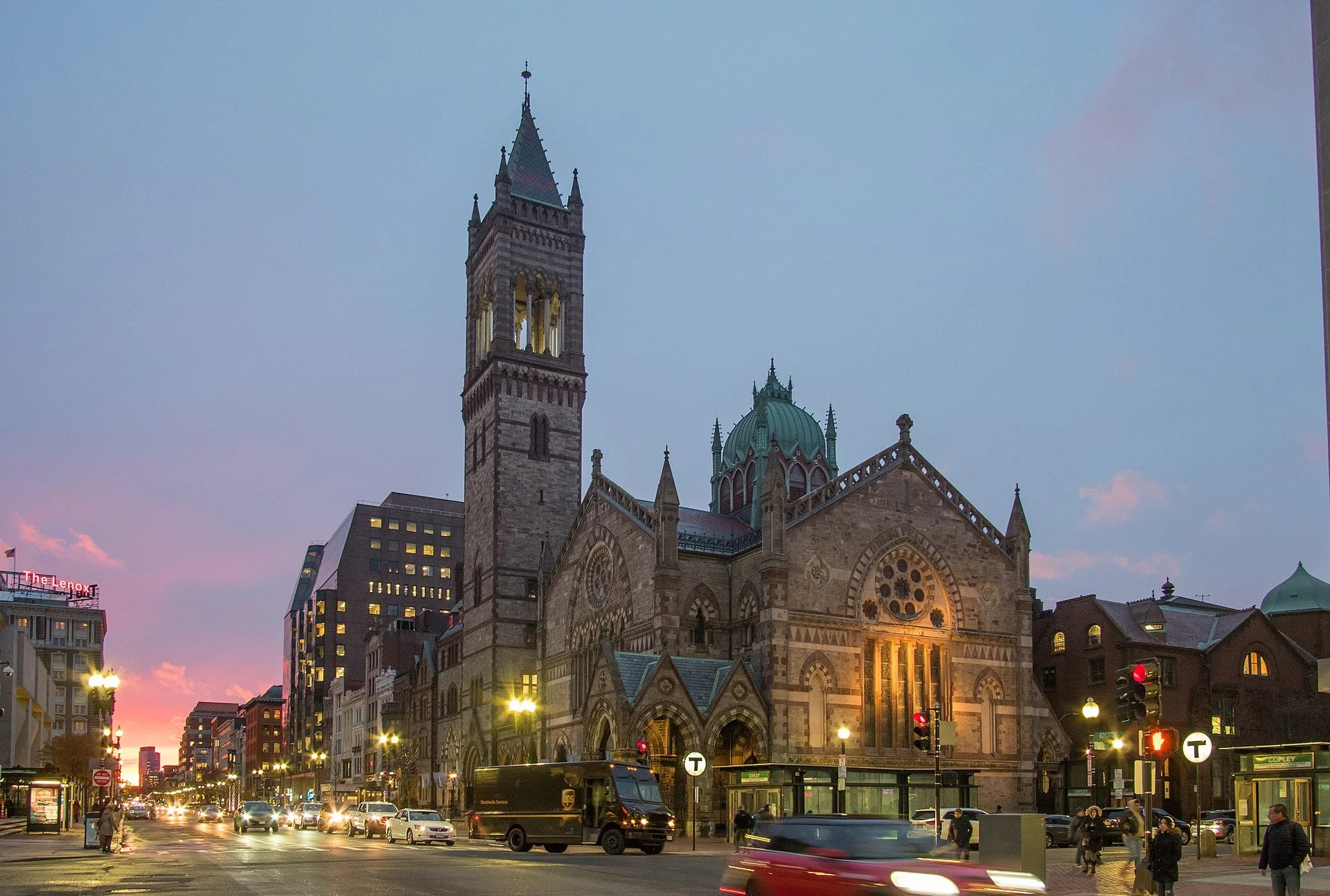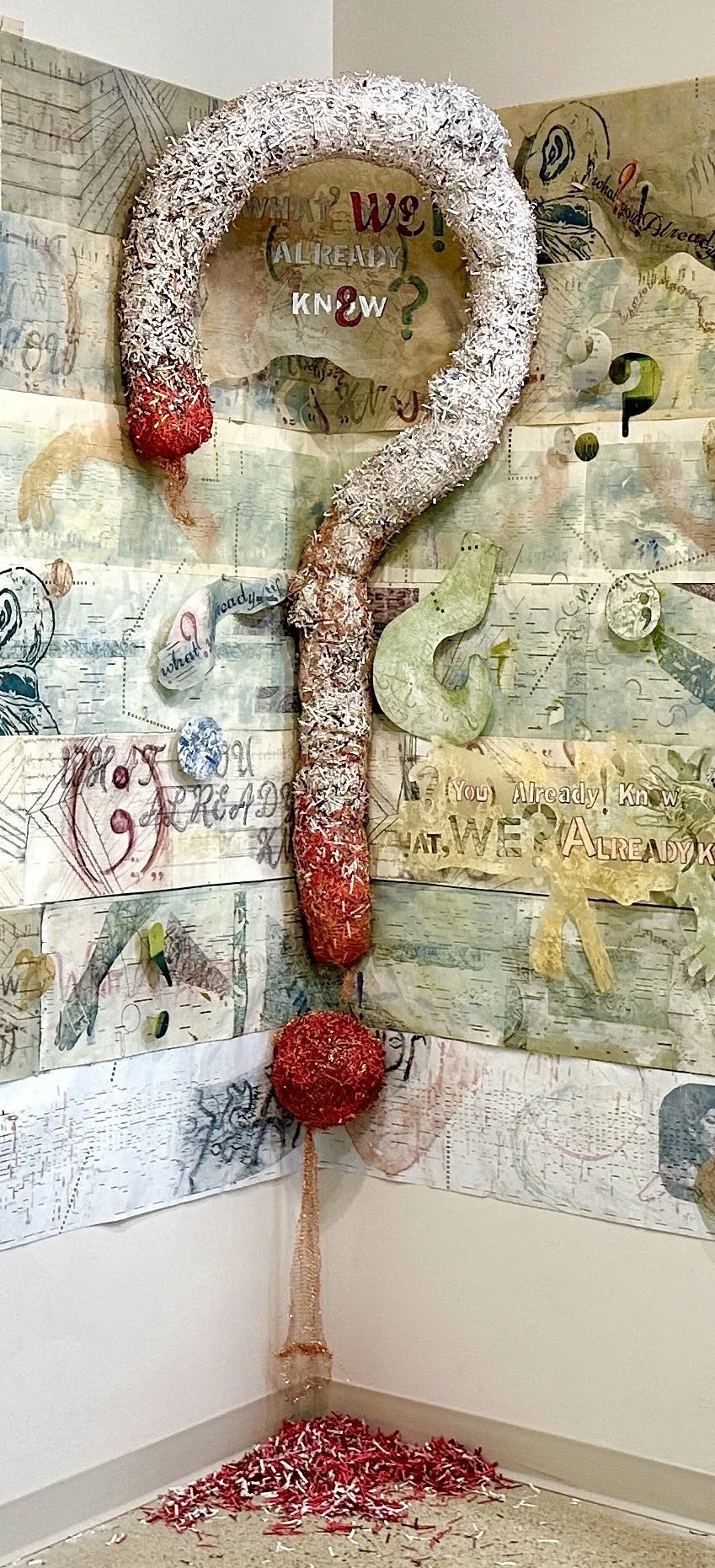
‘Poetry of their corpses’
“Hark,” (pastel), by Fu’una, in the show “Måhålang (Longing)”, at Bromfield Gallery, Boston, through Jan. 28.
The artist says:
“There are few things more consistent in my life than a sense of longing. To be Pacific Islander on the East Coast is to feel like a part of you is always missing. In my trips to Guåhan (Guam) I’ve learned to make the most of my time. I gather images and ideas that feed my creative practice. This practice has helped me connect to wherever I am living.
“In an era where we spend 90 percent of our lives in artificial environments, I find joy in the flora and fauna that indicate where you are. But biodiversity continues to shrink as land is eaten up by condos and shopping centers. For years I would draw dead animals not just for the poetry of their corpses but for the simple fact that we are an invasive species that has disrupted once thriving habitats. I seek out what I can find and compose them in my paintings into bouquets of animals, florals, and text.
“The antidote to måhålang is presence and connection. My large-scale paintings hint at memories of immersion and claim physical space where my subjects can live in perpetuity.’’
'And paying for the sins of their parents'
“When I grew up, there really was the sense of ’Why would you want to live anywhere else?’ {than the Boston area} .There’s a proudly parochial aspect to Boston. That strong tug of place was one of the themes I wanted to work with, the way environment influences what somebody becomes, that and children paying for the sins of their parents.”
— Ben Affleck (born 1972), American movie actor, director and producer. Born in Berkeley, Calif., he grew up in Cambridge, Mass.
‘Winteractive’ whale in Boston
Boston behemoth
From The Boston Guardian:
“A massive whale sculpture has received final approval for installation in {Boston’s} Downtown Crossing, promising to interact with visitors through responsive light and sounds….
“Hailing from Quebec, the 60-foot sculpture is the first component of the ‘Winteractive’ public art series sponsored by the Downtown Business Improvement District (BID)….
“The completed art series will form a linear path through the Downtown with a focus on lights, interactive exhibitions and play features that can occupy younger audiences. In addition to Downtown Crossing, the BID also hopes to bring visitors to Chinatown, the financial district, Government Center and the theater district.’’
To read the whole article, please hit this link.
Loveable or finished?
Boston’s Scollay Square in the late 19th Century. The square, now modernist/Brutalist Government Center, became famous in the 20th Century as Boston’s sin (or fun?) center — hookers, strip shows, etc. “Hey, sailor!”
“There is no section in America half so good to live in as splendid old New England — and there is no city on this continent as loveable as Boston.’’
— Mark Twain (real name Samuel Clemens) (1835-1910), in a letter to his sister-in -law Mollie Clemens, in January 1971.
xxx
“There broods over the real Boston an immense effect of finality. One feels in Boston, as one feels in no other part of the States, that the intellectual movement has ceased.’’
— H.G. Wells (1866-1946), prolific English author, in The Future in America (1906)
Sam Pizzigati: UAW victory’s global significance; next stop Tesla?
On Sept. 20, 1893, Charles and Frank Duryea of Springfield, Mass., built and then road-tested, in that city, the first American gasoline-powered car. During the early years of automobiles, several independent manufacturers built cars in the state. In 1900, Springfield gained Skene American Automobile Co. (based in Springfield but with its factory in Lewiston, Maine) and Knox Automobile. In 1905, Knox produced America's first motorized fire engines, for the Springfield Fire Department. Stevens-Duryea built cars in East Springfield from 1901 to 1915, and again from 1919 to 1927.
Via OtherWords.org
BOSTON
‘Working people the world over have celebrated the first of May as “International Labor Day” since 1886, when workers in the United States struggling for an eight-hour day staged a May 1 national protest.
Thanks to the new deal America’s auto workers have signed with Detroit’s Big Three — Ford, GM and Stellantis — that day could have new global significance. Their watershed new contracts all set April 30, 2028 as their expiration date.
If May 1, 2028 arrives without signed contracts for America’s unionized auto workers, UAW president Shawn Fain has made plain, these workers don’t plan on walking out alone.
“We invite unions around the country to align your contract expirations with our own so that together we can begin to flex our collective muscles,” says Fain. “If we’re going to truly take on the billionaire class and rebuild the economy so that it starts to work for the benefit of the many and not the few, then it’s important that we not only strike but that we strike together.”
But that May 1 day is clearly inviting coordination beyond the national level.
The May Day that workers worldwide have so long honored, Fain notes, has always been “more than just a day of commemoration, it’s a call to action.” And the labor movement worldwide is showing real signs of acting more in strategic concert.
Within the global auto industry, no corporation more embodies the inequality of our corporate world than the non-union Tesla. Under CEO Elon Musk, the world’s richest individual, Tesla pays wages that run substantially below those of Detroit’s Big Three, and that gap will only widen after the new UAW contracts go into effect.
The new UAW contracts, predicts German Bender of the Swedish think-tank Arena, could well “boost union interest among Tesla workers.”
That interest already seems to be growing. On the final Friday of the UAW walkout in the United States, workers at Tesla-owned servicing shops in Sweden went out on strike — after five years of fruitless attempts to get Tesla’s Swedish subsidiary to reach a bargaining agreement. That strike has now spread to all auto shops in Sweden that do work on Tesla cars.
This Swedish walkout represents the first formal strike against Tesla anywhere in the world. And the challenge to Tesla may be spreading. Germany’s largest union, Bloomberg reports, is hoping to organize a 12,000-worker Tesla plant near Berlin.
Tesla’s over 120,000 workers worldwide will see plenty to like in the new UAW contracts in the United States. At Ford, workers who started as temps making $16.67 an hour will automatically move to permanent status and an hourly wage rate of at least $24.91. That rate will hit $40.82 by the contract’s end, and any inflation between now and then will kick that rate higher.
Workers in major American industries haven’t seen gains that stunning since the middle of the 20th century, a time when the chief executives of America’s largest corporations averaged only just over 20 times the compensation of their workers. That gap today, the Economic Policy Institute calculates, is now running nearly 350 times.
But the greatest significance of the new UAW auto industry contracts may be the impact these bargaining triumphs will have on the future. These agreements could become the single most important step to a more equal world that any of us have ever seen.
The giants of American auto manufacturing, as Fain puts it, “underestimated” their own workers’ capacity to unite and fight together.
“We have shown the companies, the American public, and the whole world that the working class is not done fighting,” he adds. “In fact, we’re just getting started.”
Sam Pizzigati, based in Boston, co-edits Inequality.org at the Institute for Policy Studies. His books include The Case for a Maximum Wage and The Rich Don’t Always Win.
The woods are ready
“Forest Floor,’’ by Dan Hoftstadter, in his show “From Life: Drawings by Dan Hofstadter, ‘‘ at Atlantic Works Gallery, Boston, through Nov. 25.
The gallery says:
This is a show of “direct, perceptual drawings, unmediated by tools. The artist always keeps his sketchbook by his side, a constant companion to his work as an abstract painter and arts writer. Shown at the gallery are freehand landscapes – responses to wherever he was living at the time - along with portraits and figure studies.’’
‘First they came….’
This is the "First they came..." poem attributed to German theologiian and Lutheran minister Martin Niemoeller (1892-1984) at the Holocaust memorial in Boston.
Homeless surge into the affluent Back Bay
- Photo by Ed Yourdon
The Boston Public Library, on Copley Square. The peculiar lighting is from sunlight reflected off a high rise nearby. Homeless people have been congregating in increasing numbers on the square.
— Photo by Daniel Schwen
Excerpted from The Boston Guardian
“Back Bay landmarks were experiencing a surge in homeless occupancy even before the city cracked down this week on the South End encampment known as Mass & Cass, making stakeholders anxious about potential displacement.
“A range of factors have increased disruptions from unhoused Bostonians around heavily trafficked landmarks like the Boston Public Library (BPL), Prudential Center and Copley Square.
“With the city pledging to enforce anti-tent ordinances once and for all on the city’s largest encampment, civic and business groups in the Back Bay worry they’ll bear the brunt of the fallout.
“Meg Mainzer-Cohen, president of the Back Bay Association, says recent months have already seen a dramatic rise in homeless displacement to the Back Bay, a timeline that coincides with the spike in South End violence and the city’s warnings that it would soon disperse the encampment.
“‘In August things were very quiet, especially given the warm weather. By September, the situation had changed dramatically and we saw a major increase in people in need of services in the neighborhood,’ she said. ‘There’s a large presence in front of the library with a massive influx of people and what feels like an encampment.”’
To read the whole article, please hit this link.
Sam Pizzigati: Time to close the huge IRS audit gap that favors the rich
IRS logo
Read about New England’s richest towns, and how they got that way.
Via OtherWords.org
BOSTON
In 2020, U.S. households annually making over $1 million faced fewer tax audits than households with incomes low enough to qualify for the Earned Income Tax Credit. That had never happened before.
In part, you can blame the Trump administration. But conservatives in Congress actually gave Trump his tax-cutting playbook, as a new Americans for Tax Fairness report makes clear.
Ever since 2010, these right-wing lawmakers have been squeezing the IRS budget, forcing the agency “to drastically pull back on auditing the ultra-wealthy.” Between 2010 and 2020, audits on millionaires dropped a whopping 92 percent.
The super rich have taken full advantage. Nearly a thousand taxpayers making over $1 million a year, Sen. Ron Wyden (D.-Ore.) points out, haven’t even bothered “to file tax returns over multiple recent years.”
Thanks to the Inflation Reduction Act President Biden signed, the IRS gained an $80 billion increase in funding last year. Wyden, who chairs the Senate Finance Committee, wants to see the IRS use that money to increase the audit rate on America’s richest.
But Republicans are pushing to chop IRS funding by $67 billion. That cut, Americans for Tax Fairness calculates, would leave the nation right back where the Trump gang left it: with millionaires getting audited less than 1 percent of the time.
We should be resisting those auditing cuts. And besides cracking down on tax cheats, we need to close the wide constellation of loopholes that help the richest Americans legally sidestep any significant tax bill.
One example? The abuse of nonprofit donations.
Most of us hear the word “nonprofit” and think of the Red Cross or some other familiar charity. These traditional charities fall under section 501(c)(3) of the U.S. tax code.
Other nonprofits — most notably those that come under the tax code’s 501(c)(4) — can engage in activities that have next to nothing to do with providing charitable services. They can own companies indefinitely, as Forbes details, and benefit private individuals. They can lobby lawmakers as much as they want and “get directly involved in politics.”
This flexibility that C4s offer became particularly attractive to America’s deepest pockets in 2015.
Lobbyists bankrolled by the billionaire Koch family wiggled into the tax law that year a charming little loophole that lets the rich take shares of stock they own that have appreciated handsomely and pass them to C4s — without having to pay either a gift tax or a capital-gains tax on the share transfer.
The C4s receiving these hefty gifts of shares, Forbes adds, “can then sell the stock, capital gains tax–free, or hold on to it indefinitely, reaping the dividends.”
Thanks to this loophole, note investigative journalists Judd Legum and Tesnim Zekeria, billionaires like Charles Koch can now use their allied C4s “to spend as much money as they want on political campaigns without disclosing their spending or paying taxes.”
Billionaires should be paying taxes like the rest of us to support schools, health care, and the like. Instead, this handy and inequitable loophole leaves billionaires with the wherewithal to buy still more private jets, trinkets, and mansions — and our democracy.
Blank political checks for billionaires like Charles Koch have no place in a country striving to become a more equal place. So let’s fund the IRS, close the loopholes, and conduct those audits. Now!
Sam Pizzigati, based in Boston, co-edits Inequality.org at the Institute for Policy Studies. His books include The Case for a Maximum Wage and The Rich Don’t Always Win.
The perils facing Boston’s ‘Inundation District’
In the Seaport District, Boston Convention and Exhibition Center entry canopy at night.
— Photo by Generaltso (talk) (Uploads)
Text excerpted from The Boston Guardian
“As construction continues in such low-lying areas like the Seaport and East Boston, planners and private-sector insurance experts are warning developers and insurers to go beyond currently required building standards and consider what climate change will mean for potential flood hazards in future years.
"‘It's critical,’ said Martin Pillsbury, director of environmental planning for the Metropolitan Area Planning Council (MAPC). ‘I know there are costs involved and builders and developers always want to avoid costs, but if you ignore hazards, you're just potentially opening yourself up to loss down the road.’
"‘It drives me crazy when new developments say they're two feet above base flood elevation, but they're 10 feet below storm surge. Surge is a major risk in Boston,’ said Joe Rossi, president and CEO of Joe Flood Insurance and the founder of the Massachusetts Coastal Coalition ‘The Seaport probably should've been designed in a totally different way, that is only going to become more evident as we go down the road with more storms and environmental changes.”’
To read the full article, please hit this link.
Inundation District is a documentary film featuring interviews with residents and experts about the threats to Boston's shoreline and what the city can do now to contain the damage.
MassArt’s Common Good Awards
Poster for MassArt’s 2024 Auction Call for Art
Edited from a New England Council report
BOSTON
“The Massachusetts College of Art and Design (MassArt), in Boston, has announced the launch of the inaugural Common Good Awards, in celebration of its 150th anniversary as a higher-education institution.
“The awards will honor five to six exceptional individuals whose work has furthered the arts within the public sector, especially within the New England region. These efforts could come in all shapes and sizes, from an architect creating beautiful public spaces, to a civil servant whose advocacy leads to the creation of important arts programs and experiences.
“In addition to the handful of open nomination awards, there are also two specialized honors that MassArt will hand out. The first will go to a MassArt Alumnus, whose education propelled them to effectively deliver arts to the public. Additionally, the Frances Euphemia Thompson Award for Excellence in Teaching will go to a current or retired Massachusetts public school art teacher from grades K-12, whose commitment in the classroom has instilled the value of the arts into the community. The final awards ceremony is scheduled for Dec. 16.
“As the only independent, publicly funded arts and design college in the US, MassArt understands its importance as an intersection space for art and public function. ‘Arts, culture, and design are everywhere, embedded in all facets of our lives. As a public institution, we exist at the nexus of service, civic life, arts, and culture,’ said President Mary Grant.’’
Read more from MassArt.
Dukes of documentation
Letter from The Rev. Cotton Mather (1663-1728) to Massachusetts Judge William Stoughton (1631-1701), dated Sept. 2, 1692
— Photo by Lewismr
Massachusetts Historical Society headquarters, Boston. It houses a treasure trove of historical New England documents
— Photo by Biruitorul
“The men who founded and governed Massachusetts and Connecticut took themselves so seriously that they kept track of everything they did for the benefit of posterity and hoarded their papers so carefully that the whole history of the United States, recounted mainly by their descendants, has often appeared to be the history of New England writ large.”
— Edmund Morgan (1916-2013), Yale history professor
Famed Boston restaurant to reopen
Jacob Wirth’s has long been New England most famous German restaurant. New England Diary’s editor well remembers lunching there in the late 1950s and early ‘60s. It had frequently swept-up sawdust on its floor to collect fallen food and spilled beer. Government health regulations later banned that. The restaurant had perhaps the greatest beer collection in the region.
Happy news from The Boston Guardian:
After years facing an uncertain future, Boston’s historic Jacob Wirth bar and restaurant will return to the Theater District in its former glory.
As first reported by the Boston Business Journal, real estate company City Realty Group acquired the Stuart Street property earlier this year and has spent months and millions of dollars on renovations for a tentative February 2024 opening.
The city landmark, first opened as a German American restaurant in 1868, closed its doors due to fire and water damage in 2018. It was one of the oldest continuously running restaurants in Boston before shutting down, second only to the Union Oyster House, founded in 1826..
Now Jacob Wirth is coming back under the same ownership that recently purchased Boston bars including the Tam on Tremont Street and Fours, rebranded to Scores, near TD Garden.
To read the whole Guardian story, please hit this link.
Sam Pizzigati: Time for a general strike at hyper-rapacious Dollar General
— Photo by Mike Kalasnik
Dollar General headquarters, in Goodlettsville, Tenn.
Via OtherWords.org
BOSTON
President Biden recently walked a picket line in solidarity with striking auto workers. An amazing sight.
What could he do for an encore? He could stand before another major American corporation — Dollar General — holding a simple two-word placard saying “For Shame.”
Thanks to United Auto Workers members and the attention their strike has attracted, Americans now know a bit about the pressures that auto workers face. As a nation, unfortunately, we know next to nothing about life for Dollar General workers.
With more outlets than Walmart and Wendy’s combined, Dollar General has become “America’s most ubiquitous retailer,” Bloomberg reported recently, and may now be the “worst” retail employer in the country.
Bloomberg sums up Dollar General’s corporate ethos this way: “Build as many stores as possible, pack them with tons of stuff while using as little warehouse space as possible, and spend as little as possible on everything else.”
That means spending as little as possible on basic store upkeep.
Businessweek investigators have “found expired products on Dollar General shelves,” from chicken soup in Louisiana to doughnuts in Illinois. In one Oklahoma store, birds nested in the ceiling and pooped down on the merchandise.
And as little as possible on safety.
Government inspectors have reported “fire extinguishers blocked by boxes” and “shaky, leaning towers of product” as high as nine feet tall. The Occupational Safety and Health Administration last year tagged Dollar General a “severe violator” of federal workplace-safety law.
And, of course, Dollar General spends as little as possible on wages and workers.
One of every four Dollar General employees makes less than $10 an hour. Over half make under $12. Meanwhile entire stores go hours every day with only one employee responsible for an average of 7,500 square feet of retail space.
This brutal approach has paid off handsomely for investors and executives. Dollar General’s stock price has quintupled since 2009. And the company reports that its CEO, who hauls in $16.6 million a year, makes 935 more than a “median” Dollar General employee.
Officially, the typical Dollar General worker makes just $17,773 a year. But even that measly figure may be an overstatement.
Researcher Rosanna Weaver reports that the company recently changed its median-pay calculations by “annualizing” the wages of permanent employees who didn’t work a full year. Meanwhile, Dollar General actually understates CEO pay. The company’s executive compensation can run much higher than first reported once executives actually cash out their stock.
One example: After cashing out on a huge chunk of his stock awards, former CEO Todd Vlasos actually made nearly 4,500 times the annual pay of his 163,000 employees. He essentially made more in a single weekday — $328,000 — than his median employee could earn in 18 years.
All this “success” for Dollar General executives rests on a half-century of ever-greater American inequality. For two generations now, a shrinking share of U.S. income and wealth has gone into the pockets of America’s working families.
Thanks to this shrinking share, tens of millions of American families today couldn’t get by without the “bargain-basement” prices that dollar stores like Dollar General offer — at the expense of their customers’ health and safety and the economic security of their workers.
Moreover, that discounted food — often sold in “food-deprived areas” — comes highly processed, offers little in the way of nutritional value, and sits packaged within toxic, chemical-laden wrappings.
“Dollar General’s practices have an immense impact on communities across the country,” note advocacy attorneys Sara Imperiale and Margaret Brown, “especially communities of color and low-income communities.”
The U.S. economy isn’t delivering for American families — and that failure is delivering for corporate investors and executives. You’ll never find them doing their weekly food shopping at Dollar General.
How about a general strike against Dollar General?
Sam Pizzigati, based in Boston, co-edits Inequality.org at the Institute for Policy Studies. His books include The Case for a Maximum Wage and The Rich Don’t Always Win.
'Portraits' of 'witches'
Installation view of Barbara Broughel’s show ‘‘Requiem,’’ at the Krakow Witkin Gallery, Boston, through Oct. 14.
The gallery explains:
“Barbara Broughel’s ‘Requiem’ portraits consists of brooms and other modest household objects of early American design, each one a ‘portrait’ of a person accused, convicted, and/or executed as a ‘witch’ in 17th Century America. Based on court transcripts, each ‘portrait’ is reconstructed from elements detailing the victim’s life and the ‘spectral evidence’ (whereby an ill-fated event was considered to be caused indirectly through the supernatural powers of a person not present) used to convict them.’’
Salem wasn’t the only place in New England with murderous persecutions. Consider this.
David Warsh: Dorchester's weekly paper plows on through the decades
SOMERVILLE, Mass.
Rupert Murdoch is stepping down as chairman of Fox and News Corp, having built the little Australian newspaper he inherited at the age of 21 (The News of Adelaide, circulation 75,000) into a global multi-media complex of enormous political influence. He is to be succeeded by his elder son.
Myself, I have been preoccupied recently with the saga of The Dorchester Reporter, which celebrated the 40th anniversary of its founding with an ebullient party in Boston on Sept. 14.
That “every banker has one good idea” is an old-time industry joke. Ed Forry’s good idea was to get out of the business. In 1983, at age 39, with banking deregulation accelerating, he quit his $24,000-a-year job as a savings bank executive to found a community newspaper in Boston’s largest neighborhood. Dorchester was then recovering from a decade of white flight to the suburbs,
Forry had some experience to start with: confirmed in St. Gregory’s Parish, he had graduated from Boston College High School and Boston College. As a community activist, he had written a column for the Dorchester Argus-Citizen, with which Forry had created a profitable yearbook business. His wife, Mary Casey Forry, would be an all-in partner. The couple had two young children and $5,000 in the bank.
The Reporter circulated monthly for several years. At first, advertising paid the way. The monthly went weekly, paid subscriptions were introduced, circulation grew. There were hard times. In 1993, as recession lingered, Forry laid off the entire staff of nine. Mary Forry died in 2004. By then, son Bill had joined the business, to become, eventually, executive editor and publisher. He married Linda Dorcena Forry, a Haitian-American who won election to the Massachusetts House of Representatives in 2005, then moved on to the state Senate, where she held a seat until 2018. For an account of those first 25 years, read the story by Boston Globe columnist Jack Thomas.
What is the business worth today? Decent livings for its eight fulltime staffers, paid gigs for its regular lineup of columnists and critics, and opportunities for interns and freelance writers. The paper has disproportionate political influence —-Boston Mayor Michelle Wu and U.S. Sen. Ed Markey spoke at the party — and retained earnings, and has considerably enhanced Dorchester pride.
xxx
In 1963, at the opposite end of the enterprise spectrum, a married couple of lawyers from Brooklyn saw promises in the California building boom and purchased the Golden West Savings and Loan Association in Oakland. In a go-go market of 1968, they made a public offering, Over the next 40 years, Herbert and Marion Sandler ran the most successful residential-mortgage lender in the country, until they sold the firm in 2006 at the top of the market for $24 billion to a North Carolina bank. Widely blamed – in their view unfairly – for the subprime housing-mortage crisis, they commenced a long-planned entry into the philanthropy business.
Among many other overtures, they called Paul Steiger, who for 16 years had been editor of The Wall Street Journal, which was just the being acquired by Rupert Murdoch. The result, in short order, was ProPublica, with an annual budget of $10 million, for the practice of WSJ-style investigative journalism.
Steiger hired as his successor Stephen Engleberg, an 18-year veteran of The New York Times. Effective fund-raising raising increased the annual budget to $40 million. So with a staff of a hundred or so well-seasoned journalists, ProPublica has established itself as the most successful of philanthropically endowed news organizations that have arisen among the ruins of the old advertising-supported metropolitan print press.
What’s the second-best nonprofit news organization? National Public Radio, at least in my view. And though it is reasonably well endowed, it has recently beginning a new fund-raising campaign. Lacking the same marriage of top newspaper cultures, its enterprise ventures in news are somewhat lower-key. And lacking undisputed foundational principles, it is susceptible to the regular political tempests that afflict Washington D.C.
xxx
Now back to Murdoch. How did he do it? Mostly by buying newspapers properties in down markets, then building them up experimentally instead of stripping them down. Fox News, which he founded in 1996, with former Richard Nixon pollster Roger Ailes, was a particular success; MySpace, an early competitor to Facebook, didn’t fair nearly as well.
Murdoch, 92, and in good health, has put his first-born son, Lachlan, in charge of all of the empire. But further struggles maybe in store. The mogul has three other children; they are entitled to equal shares under terms of his will. The conglomerate can be disassembled and shared out. But the conglomerate’s Wall Street Journal will probably power on.
That in turn leads to The Washington Post. When Donald Graham sold his family-controlled newspaper to Amazon founder Jeff Bezos for $250 million, in 2013, it was for far less than might have been offered by other bidders. Why was that? Consider that as one of the world’s richest men, Bezos possessed both the means and the moxie to restore one of America’s three leading newspapers to robust good health. Yet it can’t have escaped Graham’s attention, either, that Bezos has four children. Thus the Post’s independence will be preserved well into the future. That seems to have been a central aim of the public-spirited Graham.
Finally, that leads back to Boston. When the New York Times Co, sold The Boston Globe to Boston Red Sox owner John Henry, in 2012, for $70 million, having mismanaged the property for more than a decade, the direction of the paper itself fell to Henry’s wife, Linda, a native Bostonian. She has managed to keep it not just afloat, but interesting. It is profitable, she says, though print circulation continues to decline.
At a Globe conference on the new business last week, she spoke proudly of new bureaus in Rhode Island and New Hampshire. We’re not interested in becoming a national [paper],” she told listeners, “but as there’s been a decline in smaller regional places, we’re trying to fill that gap.”
In Dorchester, meanwhile, the money comes from putting newsprint on the front porch. The Dorchester Reporter probably out-influences the old Boston Herald, once owned by News Corp and now operated out of suburban Braintree by Media News Group, and, at least in municipal politics, often rivals The Globe itself.
David Warsh, a veteran columnist and an economic historian, is proprietor of Somerville-based economicprincipals.com, where this column originated.
Economicprincipals.com is a reader-supported publication. To receive new posts and support Mr. Warsh’s work, consider becoming a free or paid subscriber.
Gerald FitzGerald: My wild ride on a Dukakis campaign
Michael Dukakis in 1984
At nearly one in the morning, two sets of three males paced the sidewalk in front of Phillips Drug Store at the corner of Charles and Cambridge Streets in Boston. It was 1982 in the heated Democratic primary race for governor. The youngish men were political enemies awaiting a delivery truck carrying the first edition of The Boston Globe. On the field for incumbent Massachusetts Gov. Edward J. King were Ed Reilly, political guru/re-election campaign manager; Gerry Morrissey, press secretary, and a factotum named Rick Stanton. Representing the challenger, once and future Gov. Michael S. Dukakis, were ace speechwriter Ira Jackson; deputy issues man Tom Herman and me, the Dukakis campaign press secretary. None of us spoke to any of them.
The bundles eventually dumped from the back of the truck were dragged inside and their cords cut. All six men scurried into Phillips to buy copies. Back outside, I had one Globe for us, holding it open while Jackson and Herman peered over my shoulders. Nothing on Page One! Nothing on the Metro cover! I slowly scanned succeeding pages until I found the story about our campaign besmirching Governor King’s wife. A freelance Dukakis supporter had bastardized a Jodie King radio ad to rearrange her statements as if she were answering a fictitious narrator's questions concerning her husband’s sexual preferences. Smiling broadly, I looked up at Morrissey:
“Inside. Page 19, below the fold,” I said with satisfaction.
Angry, Morrissey quickly moved toward me, thrusting an index finger close to my face:
“We’re going to get you!” he growled.
The doctored tape had arrived unsolicited in the campaign mail. I learned of it when John Sasso, Dukakis’s campaign manager, waved me into his office, grinning. We sat down and he began to play the offensively hilarious recording. Trouble was he had his telephone on speaker. Listening was a reporter from The Globe. I can’t recall clearly if it was Charlie Kenney or Ben Bradlee Jr. but I’m guessing it was Bradlee because my memory tells me that Sasso had first played it for Kenney alone and then again for me and Bradlee. I tried vigorously to stop the tape, but Sasso pushed me away. A brilliant man, John was making a mistake of earthquake proportions. He had grown close to several reporters. He treated them as buddies, expecting similar treatment in return. I had tried to convince Sasso that reporters were good people and fun to be around but they will eat you alive. A good story trumps a good “friend” any day.
The tape, we later learned, had been mailed in by an over-enthusiastic, brutally clever supporter from Ware, Mass., who supposedly used WARE’s radio facilities to create the satire. At the time I didn't even know where Ware was. As King’s campaign continued to work reporters to fan the fires of outrage, we Dukakis employees tried just as hard to hose it out of existence. Keeping what soon became known as “The Sex Tape” off the front page that first news cycle was a win for us good guys.
Earlier that day, Dukakis and I had met with the editorial board of The Patriot-Ledger at its old location in Quincy. The usual point of such meetings was to try to win a paper's endorsement, but the Patriot-Ledger’s policy was not to endorse any primary-election candidates. Dukakis still wanted to meet with them and answer their questions. Present were reporters and editors whose names I no longer recall. Near the end of the session someone entered the room and announced that there was a call for me that would be transferred to a telephone outside the door of the meeting room. I walked out and picked up the phone. Close by were wire-service teletype machines. These noisy, chattering tickers typed breaking news stories on a continuous roll of foolscap, sometimes preceded by dings whose urgency alerted staff to tear the stories off the roll to read.
It was Sasso on the phone. News of the Jodie King tape was out. He asked if the Patriot-Ledger knew this. Were they grilling Dukakis? I told him no. At the same time I turned to read the latest story coming in from Associated Press (or it might have been United Press International). It was all about the sex tape. I don't think I read the incoming story to John because that would have taken time I didn’t have. Instead, I told him that the wire service was breaking the story as we spoke. I turned around to face the newsroom. Glancing back at the machine, I noted where the story ended. Still holding the phone, I slid my left hand behind my back, ripping the paper from the teletype as silently as possible and brought it up under my suit jacket, shoving the paper down between my underpants and trousers.
Minutes later, the Duke and I were back in the car with a waiting driver. If anyone heard the crinkling sound as I scooted onto my seat, he was too polite to comment. They dropped me at campaign headquarters, and Michael went on to Springfield as scheduled.
That night, in the words of Ira Jackson quoting The Godfather script: “We hit the mattresses.” The telephones blazed for a couple of hours. After having been told that all copies of the errant tape had been destroyed, I told Frank Phillips: “The tape does not exist.” Phillips, writing for The Boston Herald, was someone I knew well and had once worked with on a journalism project. He didn’t ask if the tape had ever existed. Yes, I know – I am not proud of myself, then or now.
We went on to beat King by about seven points and defeat Republican John Sears by about a 59-38 percent margin in the general election. Although Dukakis eventually offered me his top press job, I stayed only a couple of weeks after the inauguration, which was on Jan. 6, to help with his transition. It’s one thing to work your heart out for low pay six or seven days a week all year to get your candidate elected. It’s another thing to have to go home for Thanksgiving not knowing if you've got an offer for a job to start in January. I never knew why the offer took so long, but I did learn that a paid campaign media adviser was pushing hard to clip me on behalf of his friend, an editor of an alternative weekly newspaper. Sasso is the one who told me, but advised me not to worry. When I told the Duke that I wouldn't stay he took me to lunch to talk me out of leaving. He even asked if he could meet with my wife to tell her why he wanted me. No way, I replied, she might cave. Dukakis asked me to recommend a replacement. In turn, I asked Frank Phillips. He suggested someone. To ice the interloper, I strongly recommended Frank's candidate, Jim Dorsey, who got the job.
Six years later Dukakis was serving his third term when he was nominated for president at the 1988 Democratic National Convention, in Atlanta. Sasso had run this campaign, too, until he hit a severe bump in the road five months before the convention. This time it was a videotape.
Then Delaware Sen. Joseph Biden, a primary competitor, had made himself vulnerable by delivering public remarks plagiarized from a British politician. Sasso leaked to the press a video comparison of the Biden speech with that of the Brit’s. It was enough to kill Biden's 1988 candidacy. But the public blow back was sufficient to make Sasso resign his own position at the end of September 1987. Still, I didn’t see a thing wrong with Sasso's action. While on a lunchtime walk up Beacon Street in front of the State House I learned from Mike Macklin, a TV news reporter, that Sasso was out. Macklin wanted me to comment since he knew that I had worked closely with John. I told Macklin on camera that Sasso should not take the fall for pointing out the truth and, further, that “I think he's being crucified.”
Years later, John's wife told me that during the Atlanta convention she and her husband dined with a group of national network newsmen. Speaking of his resignation Sasso told the gathering: “When I left the campaign only two people went on television to defend me – then New York Gov. Mario Cuomo and Jerry FitzGerald,” His listeners chewed their food, nodding their heads, until one, Tom Brokaw, I think, asked: “Who's Jerry FitzGerald?”
A year after the Biden tape debacle, about two months before the national election, Dukakis brought Sasso back to run the campaign as “vice-chairman.” John called me, I want to say, on Friday, Sept. 10. We met early next morning at the old Statler Building (now the Park Plaza) in Park Square, the same headquarters location used in 1982. After a brief chat I offered to help him any way he thought I could. Sadly, he declined.
“No, Fitzie. We're going down. What's worse is that we are going down never having stood for anything.” John's words cut me like a sharp knife. Even now, decades later, I find it extremely difficult to believe that he believed what he said.
Afterward followed one of my most enjoyable afternoons ever. Someone, I think on the side of the family of Sasso’s wife, Francine, was in town from New Hampshire with Red Sox tickets. John, the N.H. relative, and -- a surprise to me -- Ted Sorensen and I took a cab to Fenway Park to watch the Sox lose a close one to, as I recall, Cleveland. The seats were good, but sitting next to Sorensen made mine even better. I hardly let him shut up about his nearly 11 years as JFK's right arm, including writing speeches for the president whose phrases still ring in our hearts. In fact, we continued to chat walking all the way back from the stadium to Park Square. He was only 50 then. He would live another 22 years, but I never saw him again.
As we all parted, I clasped his hand and thanked him profusely for all he had done to help our president who had truly helped our nation. For much of my boyhood I had read books by Sorensen, Arthur M. Schlesinger Jr., Pierre Salinger, Arthur Krock and many others while daydreaming of assisting a worthy candidate to become president of the United States. That never happened for me. Still, sometimes the dreaming and the reaching out are nearly enough.
Gerald FitzGerald’s career has also included being a newspaper editor, a writer, a prosecutor, a defense lawyer and a civic leader.
That was then
Old South Church at Copley Square at sunset. This United Church of Christ congregation was first organized in 1669.
— Photo by Rhododendrites
“Boston – wrinkled, spindly-legged, depleted of nearly all her spiritual and cutaneous oils, provincial, self-esteeming – has gone on spending and spending her inflated bills of pure reputation, decade after decade.”
— Elizabeth Hardwick (1916-2007), literary critic, short-story writer and novelist, in 1962
John O. Harney: My new parcels of volunteer life
The author overseeng coneflowers at the Rose Kennedy Greenway
Inspired by the story of George Orwell caring for his roses while writing masterpiece essays, I looked forward to a retirement spent partly watching over the plants on Boston’s Rose Kennedy Greenway. Sure, I got a bit stressed over whether the fading white blooms I saw were Virginia Sweetspire Itea Virginica or Witch Alder Fothergilla. As I had earlier over whether the purple perennials were Salvia or Veronica. But for the most part, my most stressful dilemma would be choosing which dim sum joint to hit near the Greenway’s Chinatown “parcel.”
As for my own essays, never brilliant like Orwell’s, they’ve slowed to a crawl since the beginning of this year, when after 30-plus years, I left the editorship of The New England Journal of Higher Education and began volunteering in phenology at the Greenway. (Regrettably, I may have planted a kiss of death on the journal, where you’ll see few new postings since my departure.)
Fearing America’s increasing flirtations with nationalism and Us vs. Them politics, I also began volunteering in English language teaching at the Immigrant Learning Center, in Malden, Mass.
On the Greenway
Early on, a Greenway staff member gave me her cell number in case I needed help ID’ing plants or, she quipped, if I needed to report anything unusual on the Greenway, “like a body.” A staffer mentioned during an earlier volunteer pruning day, “the Greenway is enjoyed by all kinds of people so watch out for needles as you clean up around plants.”
Then Greenway retirement gig also reminded of my work days, attending economic conferences at the Federal Reserve Bank of Boston, directly across the street from Parcel 22. That Dewey Square stretch of gardens was then housing Boston’s version of the Occupy Wall Street movement. (Sometimes, feeling out of place in my ill-fitting suit, I wished that I was helping their cause rather than returning to my office.) By now, though, the whiff of rebellion had yielded to a riot of pink and white Coneflowers Echinacea and a Boxwoody imperial fragrance in the parcel near the Fed.
Sunflowers on the Greenway
Earlier in the summer, the Greenway folks worked with local nonprofit groups from Roxbury to plant massive stands of Sunflowers, the unofficial flower of my daughter-in-law’s war-torn Ukraine. In August, the Sunflowers bloomed gloriously around the vent and mural on Parcel 22. But more recently, it looked like some force had crashed into the middle of the main patch, pushing the Sunflower stocks outward like the Tunguska event in Siberia.
Nearby, I’m fascinated by the Pawpaw tree because of my childhood memory of a nursery rhyme that went: “Where, oh where oh where is Johnny [personalized for me], way down yonder in the Pawpaw patch.”
I’m also drawn to the paver my kids and I placed at the corner of Milk Street for my wife, saying “Joanne Harney We Love You.” I still check on the paver when I go to visit my “parcels.” And it looks sharp, as if a good angel has been coming along and buffing it. A half-joke in my house was that we could all meet there in case of disaster (though the urban location 500 feet or so from a rising sea may not be a safe haven forever).
I am also heartened by the Greenway’s small steps in food equity. In the edible garden, a sign reads:
ATTENTION GARDEN VISITORS: Please help us share the harvest!
The produce grown here is specifically cultivated and donated to our local homeless shelters.
Kindly refrain from picking the food to ensure it reaches those in need.
Your cooperation will help us make a difference in our community.
I’ve noted the ferny asparagus and carrots as well as strong corn and tomatillos. One day, a woman emerged from near a small houseless encampment and asked me if there was any mint in the garden. I said I thought there was some in Parcel 22, to which, she seemed relieved, saying that her husband, who camps out with her, eats it from time to time. A staffer suggested some of the Milkweeds in the gardens were planted secretly by visitors hoping to encourage Monarch Butterflies on the Greenway.
Ricinus
But I assume all know the stay clear of the purplish-leaved Ricinus growing in a galvanized bucket on Parcel 22 … host of the castor bean but also of famously deadly ricin.
My confines became Pearl, Congress and Purchase streets and Atlantic Avenue. The key reference points in my geographic descriptions were: the restaurant Trade, the Brazilian consulate with its national flag, the Native American Land Acknowledgment, the various Greenway maintenance sheds (and hangouts for the houseless), the Fed, the Red Line plaza, the Purchase Street tunnel (a reminder that the Greenway sits just a matter of a few feet over an interstate highway) and my favorite landmark, the Japanese Umbrella Pine in Parcel 21.
At the Immigrant Learning Center
Given America’s xenophobia, I also wanted to use my newly found time to help marginalized people in immigrant communities. I had tried to cover their predicament editorially in the journal. But retirement brought a new commitment. Reasoning that my decades of editing was something like teaching English, I applied for volunteer teaching of adults at the Immigrant Learning Center.
It has been a great pleasure to work with new immigrants from Haiti, Vietnam, China, Syria, Rwanda and elsewhere. When I helped one Syrian student read a children’s book about Winnie the Pooh, the description of the One Hundred Acre Wood reminded me of the Greenway work.
Many of the countries of origin of students at the center share a history of exploitation by the U.S., where these innocents fervently want to settle.
I have covered a few subjects probably too subtly for non-English speakers. Holidays, for example. I explained that Memorial Day was a day to remember people who had died. Sure, it was originally people who died in wars, but really anyone who’s died. Back to my old view that people who resisted the Vietnam War were as worthy of honor on Veterans Day as those who served.
Of Juneteenth, I tried to explain that while Americans say that they believe all are created equal, the concept of slavery clearly ran counter to that. And I reminded the many Haitians in the class that Haiti was among the many countries that abolished slavery before the U.S. I also mentioned to the Haitian students that I was rooting for the Haiti women’s national soccer team in the World Cup. To which, I was asked to explain the meaning of “rooting for.”
The immigrant lessons also teach much about the U.S. economy. One exercise focuses on occupations such as dishwasher, house cleaner, delivery driver and “manager.” One student noted getting a pay raise of 50 cents per hour—a modest honor. In one lesson, my lead teacher, himself a Haitian immigrant, drilled students on the difference between odd from even numbers … somewhat unimportant I thought until he noted smartly that Americans increasingly were getting shot knocking on the wrong doors.
Too much analytics
My aversion to analytics—clearly taking over the worlds of higher education and journalism that I recently fled—hobbles me even in volunteer life.
The Greenway folks prefer describing bloom progress with number rankings rather than comments. To make matters worse, the rankings are not the usual, 1 is best and 5 is worst, or vice versa. Instead, 3 is the best. It is peak flowering, then 4 is much less and 5 about done. 1 signifies just starting to bloom and 2 is progressing. Even an amateur like me can take a stab at peak flowering, but discriminating between 1 and 2 and between 4 and 5 is much tougher. And what to think of the Lamb’s Ear whose foliage graced two large banks in Parcel 21 but only shot out one flower on my watch.
The ranking snafu is familiar to anyone pestered by evaluation requests whenever you buy a product or service these days. As a former writer and editor, I’m happier with my rough notes than my arbitrary rankings.
I tell myself I may be a small part of a grand repository of plant info, or at least some effort to introduce identifying plant tags, which the Greenway lacks. Or an “interactive bloom tracker,” which sees to be always out of order when I try it. Of course, the data may be going into a black hole. But for me, the exercise is worth it.
The immigration educators understandably discourage use of synonyms, puns and anecdotes that may just confuse new English learners. All tough for a guy who considered himself “thoughtful,” but may have really been “wordy” and “unfocused.”
‘Visual equivalents’
“Scrip(t) Scraps, Version 1’’ (intaglio, relief prints on player piano scrolls with 5.5’ etched copper parentheses, copper mesh stuffed with shredded paper), by Somerville, Mass.-based artist Randy Garber, in her show “Scrip(t) Scraps,’’ at Kingston Gallery, Boston, Nov. 1-20.
She says:
‘“My work investigates perception and how meaning is deciphered. I have consistently—and persistently—focused on finding ways to visually express both the beauty and vagaries of communication. Profoundly hard of hearing since infancy and acutely aware of the potential for misinterpretation, I explore the spaces between silence and sound: confusion and clarity, chaos and precision.
“Interested in gaps between our five (known) senses and how they inform, influence and intercept one another, I aim to find visual equivalents that suggest the complicated processes in how we receive and make sense of information. I create structures and images that evoke, for instance, cochlea, ear drums, instruments, neural networks and language systems.’’








